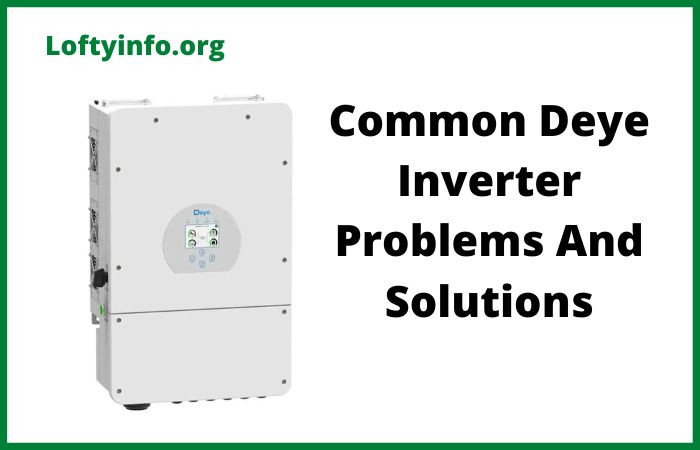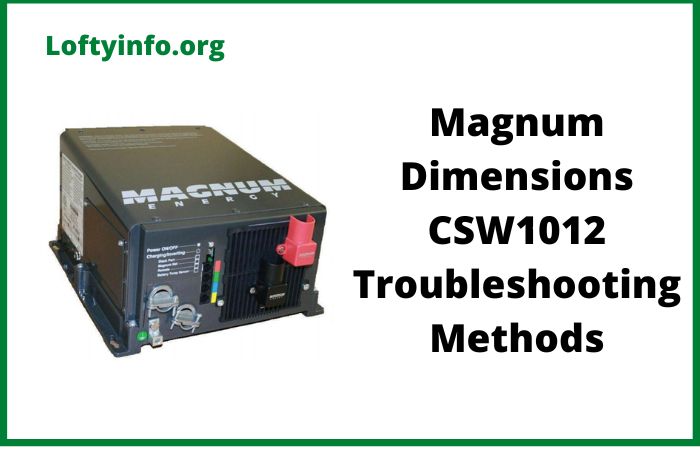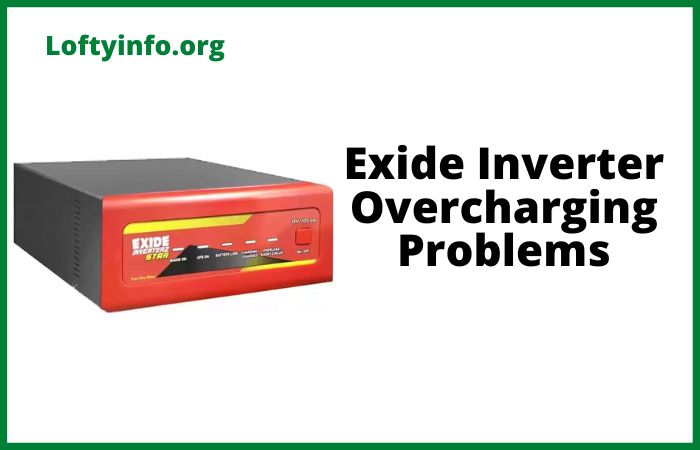Common Deye Inverter Problems and How to Fix Them
Deye inverters have become increasingly popular in solar energy systems due to their hybrid capabilities and competitive pricing.
These devices convert direct current from solar panels into alternating current for home use while managing battery storage.
Despite their reliability, users occasionally encounter various technical issues that can disrupt power generation and system performance.
Understanding these common problems and their solutions helps homeowners maintain efficient solar operations and avoid costly downtime.
Common Deye Inverter Problems
1) Battery Management System Communication Failures
One of the most frequently reported issues with Deye inverters involves communication breakdowns between the inverter and the battery management system.
This problem manifests when the inverter fails to receive critical data from the BMS such as state of charge, voltage levels or temperature readings.
Users often notice that battery information displays incorrectly on the inverter screen or the system shows a communication error code like F58.
The primary cause stems from incompatible communication protocols or improper cable connections. Different BMS brands use varying protocol standards including CAN bus, RS485 or Modbus protocols.
When the inverter lithium mode setting does not match the BMS protocol, communication breaks down completely. Additionally, loose RJ45 cables, incorrect port selection or outdated firmware versions can trigger this issue.
To resolve BMS communication failures, start by verifying the correct communication port usage on both devices.
The inverter typically has labeled ports such as CAN, BMS1 or BMS2, while the BMS has corresponding output ports. Ensure you are using the proper protocol setting in the inverter menu, which should match your specific BMS brand.
For instance, JK BMS units typically require protocol 001 for Deye inverters, while Daly BMS may need protocol 12 for RS485 connections.
Check that all cable connections are secure and use standard ethernet cables with proper pin configurations.
If problems persist, update both the BMS and inverter firmware to the latest versions available from the manufacturer. Some users find success by performing a complete system restart, shutting down both the BMS and inverter for several minutes before restarting.
2) Inaccurate Power Reporting on Monitoring Applications
Many Deye inverter owners experience significant discrepancies between power readings displayed on the physical inverter screen and what appears in cloud monitoring applications like Solarman or Deye Cloud.
The most common complaint involves grid consumption and load power readings showing only 10% of actual values.
For example, if the inverter screen displays 5000 watts of grid power, the mobile application might show just 500 watts.
This problem originates from firmware bugs in either the inverter itself or the data logger device that transmits information to cloud servers.
The logger processes raw data from the inverter and transmits it to online platforms.
When the logger firmware contains calculation errors or scaling issues, it incorrectly processes power values before transmission. Older logger versions particularly struggle with accurate power conversion calculations, leading to these tenfold discrepancies.
The solution requires a firmware update specifically targeting the data logger module. Contact Deye customer support directly through their service email or phone line with your wifi dongle serial number.
Deye technicians can remotely access and update logger firmware over the internet connection. Many users report that upgrading from logger version LSW3_32U_5406_1.06 to version 1.07 completely resolves the reporting accuracy issue.
After the update, allow 24 hours for the system to recalibrate and verify that power readings now match between the physical display and mobile applications.
Keep in mind that some users may also need inverter firmware updates if logger updates alone do not fix the problem.
3) Time of Use Settings Malfunction with Lithium Mode
Users frequently encounter problems where time of use programming fails to work correctly when operating in lithium mode with BMS communication enabled.
The inverter ignores scheduled charging and discharging times, or batteries unexpectedly charge from the grid during periods when this should be disabled.
This creates higher electricity costs as the system fails to optimize energy usage based on utility rate schedules.
The root cause involves conflicts between BMS control authority and inverter time of use logic. When lithium mode is active with BMS communication, the battery management system gains priority control over charging and discharging operations.
The BMS sends charge current limits and other parameters that can override the inverter’s programmed schedules.
Voltage offset issues exist where the inverter does not respect the exact voltage targets set in time of use parameters, particularly when grid power is present.
To address this issue, users have several options depending on their priorities. If BMS communication is not essential, switch the battery mode from lithium to voltage mode in the inverter settings.
This transfers full control to the inverter and allows time of use schedules to function normally. Set appropriate voltage thresholds for charging and discharging based on your battery specifications.
If maintaining BMS communication is necessary, carefully verify that time of use programming begins at 01:00 AM and ensure all time slots are properly configured without gaps. Disable the grid charge option in battery settings if you do not want grid charging to occur.
Some advanced users implement custom BMS firmware or middleware solutions that better coordinate BMS parameters with inverter schedules.
Regular monitoring of system behavior during the first few days after changes helps identify any remaining conflicts.
4) Unexpected Grid Charging During Off-Peak Hours
Another frustrating problem occurs when Deye inverters charge batteries from the grid during times when this function should be disabled.
Homeowners discover their electricity bills increasing because the inverter draws power from the utility grid at night or during expensive peak rate periods, despite having grid charging turned off in the settings menu.
This issue typically stems from incorrect empty battery voltage thresholds combined with overly aggressive battery protection logic.
The inverter contains built-in safety mechanisms that prioritize battery health over user settings.
When battery voltage drops below certain internal thresholds, the inverter may automatically initiate grid charging regardless of the grid charge disable setting.
Some BMS units communicate low state of charge warnings that trigger emergency charging protocols.
Firmware bugs in certain inverter versions also cause the system to misinterpret time of use settings, particularly when depth of discharge parameters conflict with scheduled charging windows.
The solution begins with adjusting the empty battery voltage setting in the inverter configuration. Access this parameter through the Deye Cloud mobile application rather than the physical inverter screen, as the app allows lower voltage values.
Set the empty battery voltage appropriately for your battery chemistry, ensuring it matches realistic minimum safe voltage levels. For 16S lithium batteries, values around 48 volts work well, while 15S configurations may need 45 volts.
Review your depth of discharge settings to ensure they align with your actual battery capacity and desired usage patterns. Double-check that grid charge checkboxes are unchecked in both time of use settings and battery setup menus.
If using BMS communication, verify that the BMS itself is not requesting charging through its own protection algorithms.
Monitor the system closely for several charge and discharge cycles to confirm the changes have eliminated unwanted grid charging.
5) Display Screen and Monitoring Issues
Deye inverter owners occasionally face problems with the LCD display screen itself, ranging from complete blank screens to incorrect dark mode activation or unresponsive touchscreen functionality.
The display might show no information despite the inverter functioning normally, or it may switch to an inverted color scheme that makes reading difficult.
These display problems arise from several sources including loose internal connections, corrupted display firmware or physical damage to the screen module.
The display unit connects to the main inverter board through internal cables that can become unseated during shipping or installation.
Firmware corruption sometimes occurs during interrupted update procedures or power fluctuations. Some users report that extended operation in high ambient temperatures degrades screen performance over time.
To fix display issues, first verify that the inverter has proper power supply from either solar panels, grid connection or batteries.
If power is confirmed, perform a display reset by pressing and holding the escape button for approximately five seconds.
This triggers an automatic display recalibration that often resolves minor glitches. The screen will go blank temporarily, indicator lights may blink and the display will show OFF before returning to normal operation.
If the dark mode persists after reset attempts, check for available firmware updates for both the display module and main inverter.
In cases where the screen remains completely unresponsive, disconnect all power sources including DC switches, AC breakers and battery connections.
Wait at least five minutes to allow complete discharge of internal capacitors, then restore power and check if the display recovers.
For persistent hardware failures, contact the installer or Deye support for screen replacement, as the display assembly can be swapped without replacing the entire inverter unit.
Solar energy systems provide significant benefits but require proper maintenance and troubleshooting knowledge to operate at peak efficiency. Deye inverters offer excellent value and performance when functioning correctly.
By understanding these common issues, their causes and proven solutions, homeowners can quickly address problems and minimize system downtime.
Regular firmware updates, proper initial configuration and periodic system checks help prevent many issues before they occur.
When problems do arise, systematic troubleshooting starting with simple solutions like cable checks and setting verification often resolves issues without requiring professional intervention or expensive repairs.
Best way to charge inverter battery at home
Deye inverter troubleshooting for common problems
Solutions to growatt spf 5000 es problems
Xantrex inverter troubleshooting for common problems
How to take care of inverter battery






